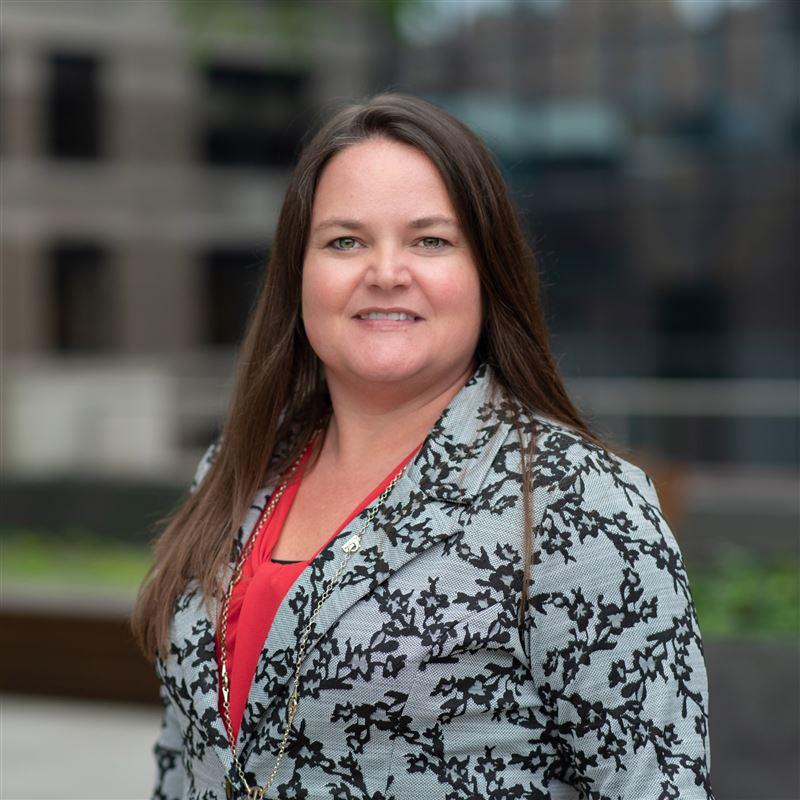What Makes a Corridor "Complete"?
When evaluating a roadway right of way (ROW), there is much more than meets the eye. In most cases, water, wastewater, power, data and stormwater infrastructure are moving through the same corridors carrying people and goods and have water underground or overhead. How can we plan, finance, engineer and construct these infrastructure types in a more integrated manner to future-proof our corridors? And how can we permanently broaden the lens of comprehensive transportation planning? Jenny Humphreys, CDM Smith’s leading expert in the complete corridors concept, answers these questions and others.
I’ve heard of complete streets, but complete corridors are new to me. What is the difference and how do you categorize projects of each type?
The concept of complete streets revolutionized how we view and design our roadways. By introducing the idea of “street as space,” complete streets incorporate safety and design elements like ample sidewalks, bike/bus lanes, street tree plantings and curb extensions to boost efficiencies. Through coordinated efforts in planning, design, construction, operations and maintenance, complete streets ensure the same rights and safe access for users of all ages and abilities. Thanks in large part to SmartGrowth America, the concept has resulted in safer, more content-sensitive roadways.
Complete corridors represent a new philosophy and approach developed by CDM Smith to vision, inventory, design and construct roadways and all other infrastructure within the ROW. This distinction is important because in a world where public works departments, private utilities and stormwater management, land use and safety teams all operate within the public ROW, proactive coordination can mean the difference between years-long, expensive construction projects and “dig-once” initiatives.
The approach has emerged from CDM Smith's various engineering disciplines and the evolving challenges clients face. "This has become more urgent as we begin to address more significant stormwater management issues, replace aging pipelines, and implement resilience plans on a more regional level," says Humphreys. Many of those challenges, and others, are addressed within the transportation rights of way. "Through complete corridors, we break down the silos that can result in inefficient, redundant and expensive construction events," she explains.
Evaluating corridors this way has some added organizational benefits, too. Complete corridors support inter-agency coordination and drive innovation, “so big-picture initiatives like resiliency planning, recovery from extreme weather events, vision zero and mobility improvement prioritization plans don’t happen in siloed department back offices like they used to,” says Humphreys.
The benefits of a complete corridors approach

Now that I understand what the complete corridors approach is and how it can support my infrastructure projects, how do I get started?
It's helpful to walk through an evaluation exercise and take inventory of your corridor to determine if the identified improvements would benefit from this approach. Here are some questions you might ask:
- What is the main function of the road? Is this an urban street, suburban corridor or rural highway?
- What are the modes of transport in the study area?
- How can we reconfigure the road to meet our mobility needs and make the corridor safe for all users?
- Is there an appetite to do things better or more innovatively?
- What programmatic improvements can be made to improve design and construction efficiencies for various infrastructure improvements in the ROW?
- Can we organize our roadway network better to prioritize mobility needs and improve equitable connectivity?
- Who owns the ROW? What utility easements currently exist or are proposed?
- Is your region facing major lead and copper pipe replacement programs? How can more infrastructure improvements be made during a single construction effort?
- What infrastructure improvements have been identified in regional transportation, utility, stormwater or resilience plans?
- Are there parallel routes or other ROWs in the network—potential locations for these infrastructure improvements?
- What are the context sensitivities we must account for?
o For above the roadway: Are cell towers, overhead power lines and vehicle communication systems in good condition? Can steps be taken to improve lighting, signage and wayfinding? Is aerial transportation in the area’s future?
o For the ground level: Have green infrastructure techniques been implemented to help manage stormwater? Are there plans for (or expansions of) solar energy harvesting and electric vehicle charging stations? Does the land have any environmental resources, community features, wetlands or adjacent architecture with historical significance?
o For under the roadway: Should the underground infrastructure—power grids, oil/gas pipelines, telecom, water/wastewater and stormwater storage—be optimized for performance and capacity?

Projects like these require teams that have the knowledge and experience needed to turn complete corridors visions into reality.









